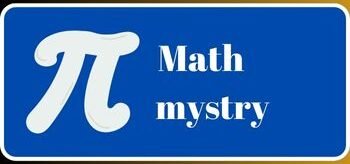Currently Empty: $0.00

Michael Atiyah and the Claimed Proof of the Riemann Hypothesis
In 2018, the mathematical community was electrified when legendary mathematician Michael Atiyah announced that he had found a proof of the Riemann Hypothesis, one of the greatest unsolved problems in mathematics. The Riemann Hypothesis, first proposed by Bernhard Riemann in 1859, deals with the distribution of the zeros of the Riemann zeta function. This problem is not just abstract theory it lies at the heart of number theory and directly influences our understanding of the distribution of prime numbers.
What Is the Riemann Hypothesis?
The Riemann Hypothesis suggests that all non-trivial zeros of the zeta function lie on a critical line with a real part equal to 1/2. If true, this result would explain deep patterns in the way prime numbers are distributed.
Because of its importance, the hypothesis is listed as one of the Clay Mathematics Institute’s Millennium Prize Problems, carrying a $1 million reward for a correct proof.
You can also explore our post on Number Theory Basics to see how primes and functions are connected.
Atiyah’s Claimed Proof
Atiyah introduced his proposed solution at the 2018 Heidelberg Laureate Forum, a prestigious gathering of top mathematicians and computer scientists. His proof relied on a new mathematical constant he introduced, which he called the Todd function, and its relation to something he described as the fine structure constant of the Todd function.
Atiyah suggested that this framework could provide the missing link needed to prove the Riemann Hypothesis once and for all. Given his reputation having already won both the Fields Medal and the Abel Prize his announcement drew massive attention.
Related: History Mystery: The Unsolved Mystery of the Riemann Hypothesis
Why Mathematicians Rejected the Proof
Despite the excitement, experts quickly pointed out serious problems in Atiyah’s argument. Some of the key issues were:
Lack of Rigor
Mathematical proofs must be detailed, step-by-step logical arguments. Atiyah’s presentation was more of a conceptual sketch, leaving many steps unexplained. Without rigorous verification, the claim could not hold.
Unclear Definitions
The Todd function and related ideas were not clearly defined in mathematical literature. Without precise definitions, other mathematicians could not verify his approach.
Logical Gaps
Experts noted several leaps in reasoning where Atiyah assumed results that were unproven. In mathematics, a single unjustified step is enough to invalidate a proof.
No Peer Review
Atiyah’s notes were never formally published in peer-reviewed journals. Instead, they circulated informally, and the flaws were quickly spotted by specialists.
The Lasting Impact
Although Atiyah’s claim did not stand, his attempt reminds us of the difficulty and beauty of mathematical research. Even the greatest minds can be mistaken, but their efforts often spark new ideas and conversations. The Riemann Hypothesis proof remains elusive, continuing to challenge mathematicians worldwide.
👉 If you’re curious about related concepts, you can read our guide on Prime Numbers Explained
and also explore our detailed post on Number Theory Basics
.
Key Takeaway
Michael Atiyah’s career was filled with remarkable achievements, but his claimed proof of the Riemann Hypothesis did not meet the standards of modern mathematics. The hypothesis remains unsolved, representing one of the most profound puzzles in human knowledge.
In mathematics, proof is king—every step must withstand scrutiny. Atiyah’s story is a reminder that even failed attempts can inspire future generations to keep searching for the truth.
